A small startup in Belgium is finalizing the development of a prototype generator, which is lighter, smaller, and more efficient than conventional designs of similar output. Inventor and Magnax founder Peter Leijnen say his axial flux 100-kW prototype weights about 850 kg, which is significantly less than a traditional direct-drive generator that typically weighs 4,000 kg or more. The advantages of the new technology include higher efficiency (96% to 97%, depending on the size of the machine), reliability, and scalability with relatively low production costs. While the prototype will be installed in a medium-scale, direct-drive wind turbine, Leijnen adds that Magnax’ focus is on developing megawatt-sized machines for large-scale wind turbines.
“The idea for a new generator came when a client asked me to develop a new type of wind turbine, which requires a direct-drive generator and significantly lower weight,” says Leijnen. After some market research, he concluded that no existing generator would fit the requirements. “So, I decided to build one. Previous research indicated that the target could only be met by the so-called ‘axial-flux’ topology that works for generators and motors.”
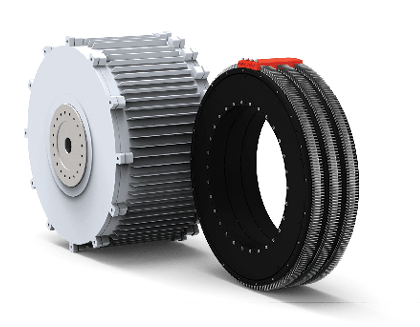
With equal diameter, the Magnax design is about half the length and a third of the weight of a conventional generator of similar output. The three-unit design is a concept illustration.
Fortunately, Ghent University, which is close to where Leijnen lives, had been researching axial-flux technology over the last six years. Still, a considerable challenge lay ahead in turning the technology into a design that could be produced with a high degree of automation on an industrial scale, and with power ratings up to several MWs.
Based on the calculations and electromagnetic simulations from the University, Leijnen’s team designed and built the 100-kW prototype “in two years of hard-core R&D and prototyping,” he says.
Despite their electromagnetic superiority over radial-flux machines, axial-flux designs pose serious production challenges. Leijnen says that is the main reason most generators today use a radial flux.
The first challenge, he says, was finding a way to accurately fix and position the stator teeth and the windings in the stator, which is difficult because there are high magnetic forces acting between the rotor and the stator. The air gap must be kept uniform and small.
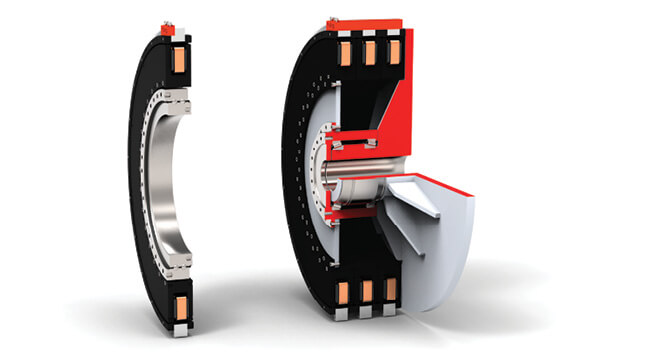
The large hollow shaft on Magnax Machines provides ample space for the integration of a load-bearing system, which is independent of the generators internal bearing. This allows designing a load-bearing system that fits the application. In addition, says Leijnen, the axial air gap, means even deflections of the bearing system do not affect the air gap. It is also possible to use the internal Magnax Machine bearing alone in cases where only torque loads are applied.
“The second challenge lay in cooling the windings, which is difficult because they are deep within the stator, and between the two rotor disks. The third challenge is that traditional axial-flux machines are notoriously difficult to manufacture and it’s next to impossible to highly automate their production. Radial-flux machines are easier to manufacture because they use more or less the same principles of well-known induction generators.” Leijnen says the new, patented mechanical concept solves the challenges and enables highly automated manufacturing.
Electromagnetic calculations on axial-flux machines, he adds, are particularly difficult and require a huge amount of FEM simulation and analytical calculation. “Parameters such as terminal voltage, iron losses, eddy-current losses in the permanent magnets, copper losses, torque ripple, and cogging torque must be calculated before you can even start on the mechanical design. Over the past six years, Ghent University has been gaining expertise in this field, specifically for axial-flux machines. So they created the electromagnetic model, which I then translated into a mechanical design using our new concept,” says Leijnen.
He says he’s convinced that wind power will remain the largest fraction of renewable energy generation, even with solar rising exponentially. “With innovations like these, wind-generated power will eventually become cheaper than fossil energy, even with sub-megawatt turbines in standalone applications. Offshore wind has even greater potential. Technical advances will enable the construction of ever-larger turbines, thus further driving down energy costs. Deployment on such a large scale and over such vast spaces as the ocean will necessitate low or even no-maintenance components, and our generators, being direct-drive and having encapsulated windings, will be hard to beat on this front, too.”
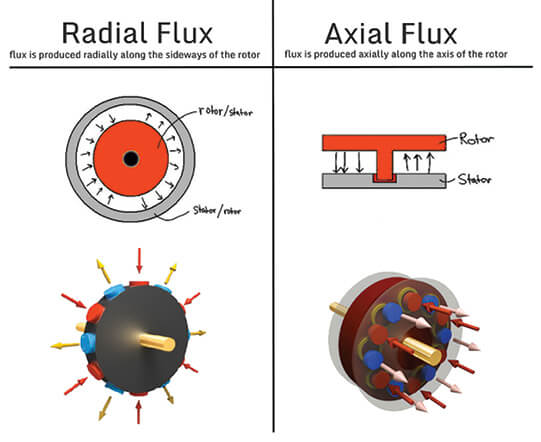
Radial fluxes and hence forces, project radially in most conventional generators. Magnax proposed an axial flux design which presents several advantages and design challenges.
So what is next for Magnax? “From a product development perspective, I have a clear view of how we can further innovate with these machines. Not only in the wind industry but also for other uses such as elevators and aircraft,” he says.
Leijnen adds that since the concept is proven, his co-founder Daan Moreels is preparing a go-to-market plan. “It will take some time to find the ideal use cases and co-creation opportunities, but we’ll continue to further leverage industrial innovation with direct-drive motor and generator technology that outperforms conventional technology in weight, efficiency, reliability, and cost-effectiveness. This way we support the global transition to fully renewable power generation and ultra-efficient machines.” Moreels adds that the Magnax generator has passed prototype tests that can be viewed working in this video: https://goo.gl/VYQGQq
Filed Under: Generators

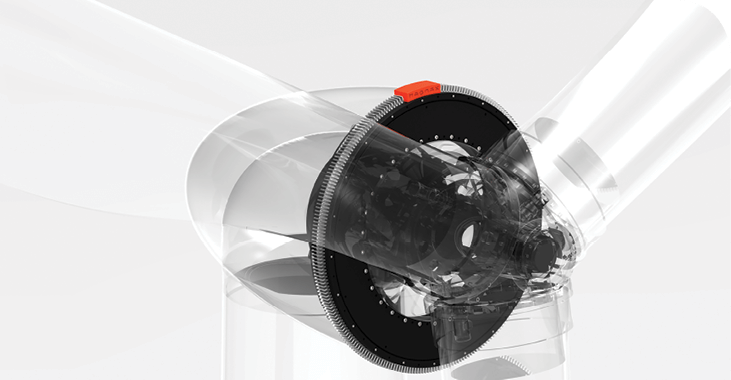
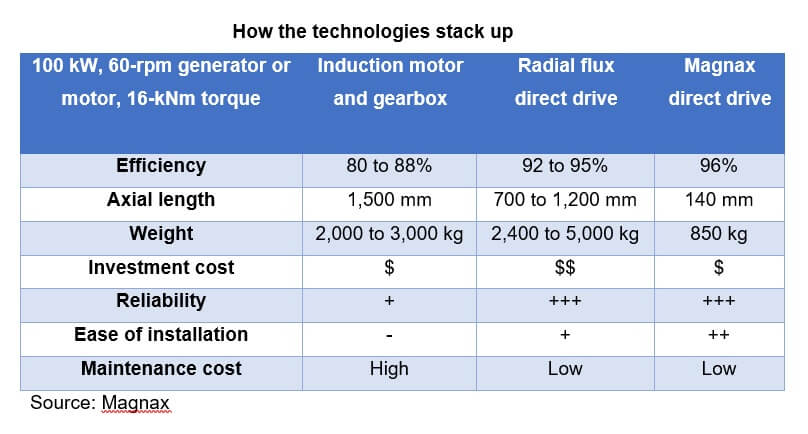

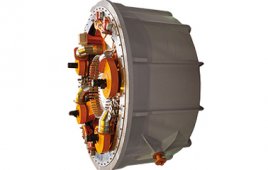
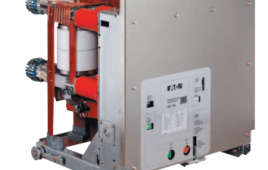
Sorry to said …. Direct drive is the must
By avoiding the maintenance of the gearbox , oil change and others wear and tear , on tidal project the cost of installing , retrieving a turbine ( 1MW- 200 Tons) can cost up to 1 million dollar each time , not even talking about the weather at sea who can delay the intervention. While electronique onshore can be repair or change at low cost any time
Regards
Power electronics are inefficient? Wrong, George. The efficiency losses from mppt controllers or grid tie inverters are very much comparable if not less than those related to gearboxes…and that’s just one fatal flaw in your argument. Another is that direct drive has proven itself to be very cost efficient in the residential sector – it’s far from folly. Gearboxes over-complicate and inevitably increase both upfront and maintenance costs that are hard to recover, at least for micro wind turbines. You’re blowing a whole lot of wind, but none of it is useful.
It looks like Magnax technology will become important, but only in applications other than wind power, because direct drive is a dead end. The main reason is that since direct drive has no gearbox, it cannot produce constant generator speed from variable rotor speed.
This is a fatal flaw. All modern wind turbines operate with variable rotor speed to obtain the maximum power output at all times. Therefore, direct drive requires power electronics to convert the wild AC to constant grid frequency. The problem is that power electronics, or inverters, are inefficient, sensitive, expensive and unreliable, and they produce dirty power.
The best way to improve wind turbines is to eliminate the power electronics, as DeWind has done. This method does not use the direct drive technology that Magnax and others have developed. It uses the synchronous generator and controls that have been perfected over the past century for central power stations. It does require a variable-to-constant-speed gearbox. Even though DeWind’s version works fine, there is plenty of room to improve this device.
The power output of a DeWind turbine is in the form of a pure sine wave. It is clean and of constant grid frequency. The synchronous generator is directly connected to the grid, no inverter required. It is easily designed for voltage support, control of the power factor and other requirements for grid connection. Including these necessary services in power electronics is much more expensive and inefficient.
Consider also that it is de rigueur for advocates of direct drive to claim that eliminating the gearbox increases reliability. The Magnax literature conforms to this orthodoxy. But that claim is false for at least two reasons. First, consider what Henrik Stiesdal, former chief technology officer at Siemens, said in 2010:
“Gearbox problems are overblown. Siemens is developing direct drive as a means of generating more energy at lower cost. The turbines can be made more competitive through direct drive.”
Although I do not agree with the final two sentences, I include them to indicate that Siemens believes it has good reasons to prefer direct drive. Stiesdal cites another reason in the Windpower article below.
http://www.windpowerengineering.com/innovators-and-influencers/innovator-2017-henrik-stiesdal/
In this article, Stiesdal says that direct drive is more reliable than conventional arrangements. Again, this is a common failing of those who advocate direct drive. They argue that reducing the number of parts must inevitably increase the mean time between failures. This is specious, because it fails to consider the reliability of each of the parts.
However, suppose that part count is the only measure of reliability. While direct drive modestly reduces the part count by eliminating the gearbox, which typically has fewer than fifty wearing parts, how much greater would the increase in reliability be if the power electronics were eliminated? Those devices have thousands of parts, and they are subjected to considerable stress from heat, constant rapid cycling and extraneous electrical disturbances.
Since the power electronics cannot be eliminated in direct drive, then based on part count, the most reliable wind turbine is not direct drive. It is a turbine that does not require power electronics such as the Dewind 8.2 and 9.2, even though they require a special gearbox.
To sum up, gearbox problems are overblown, and if part count is the measure of reliability, then direct drive is not as reliable as a DeWind-type turbine. Advocates of direct drive should stop claiming that gearboxes are the problem and that direct drive is the most reliable technology. The industry must eventually accept the fact that direct drive is folly, and I have not listed all the reasons here.